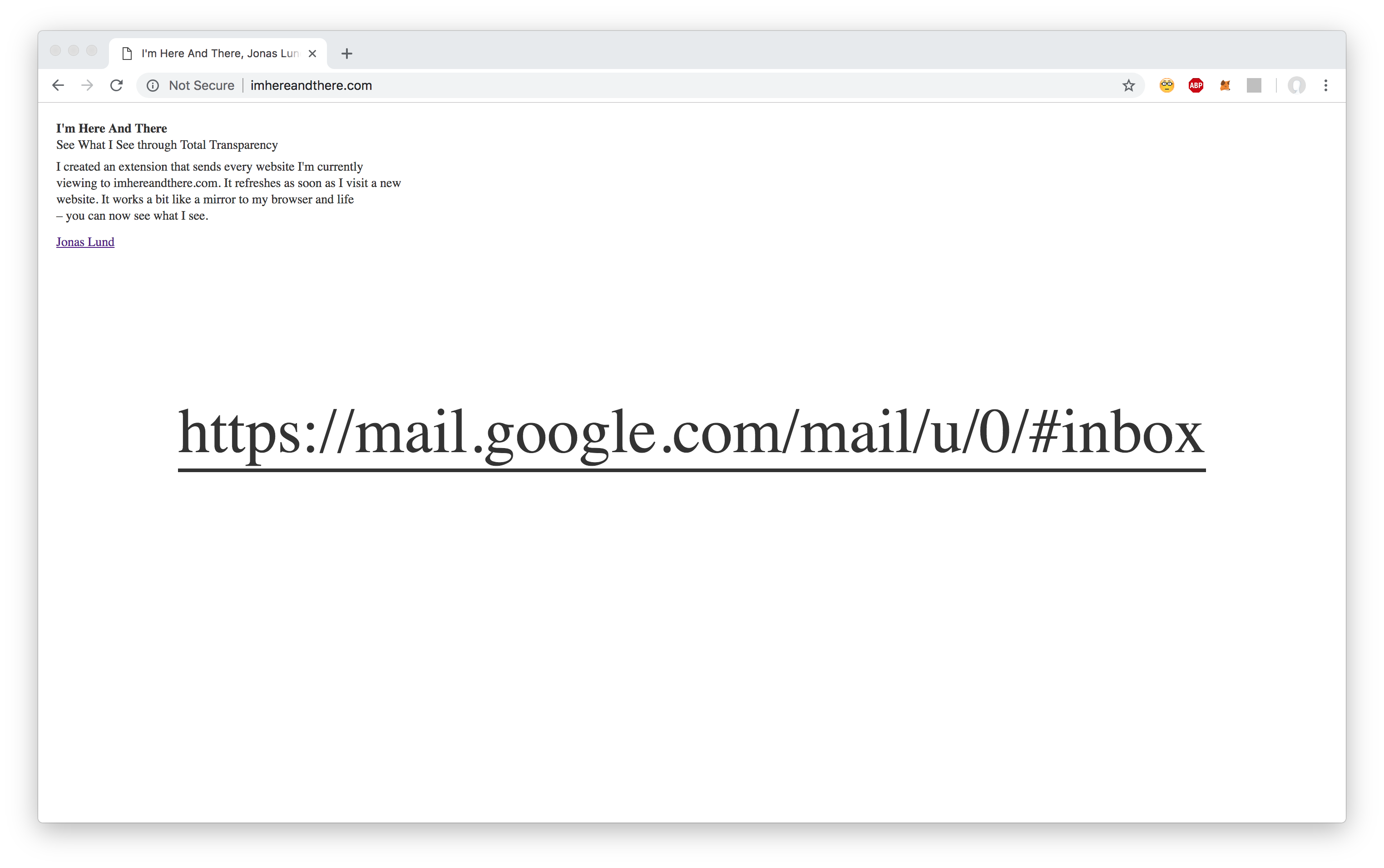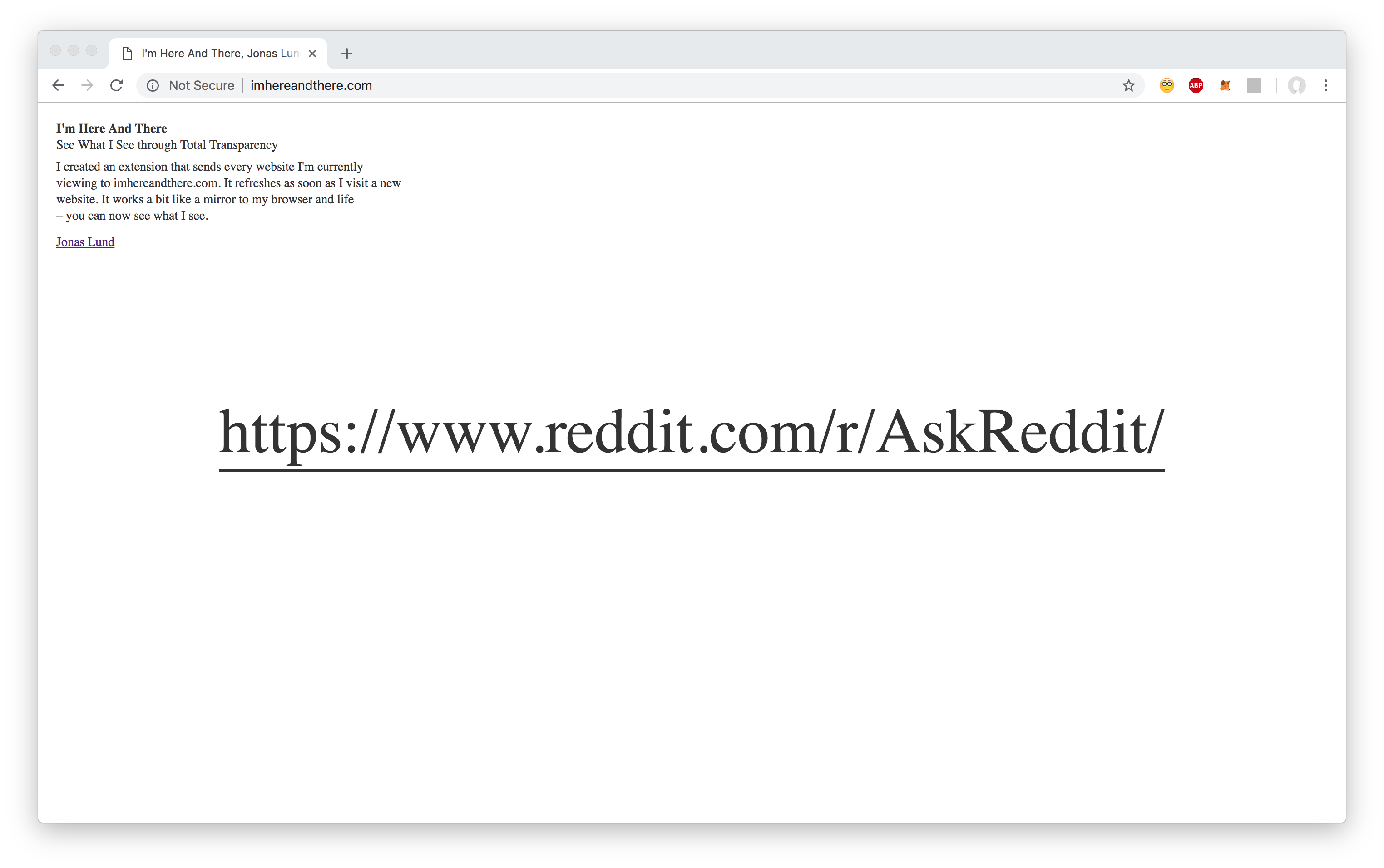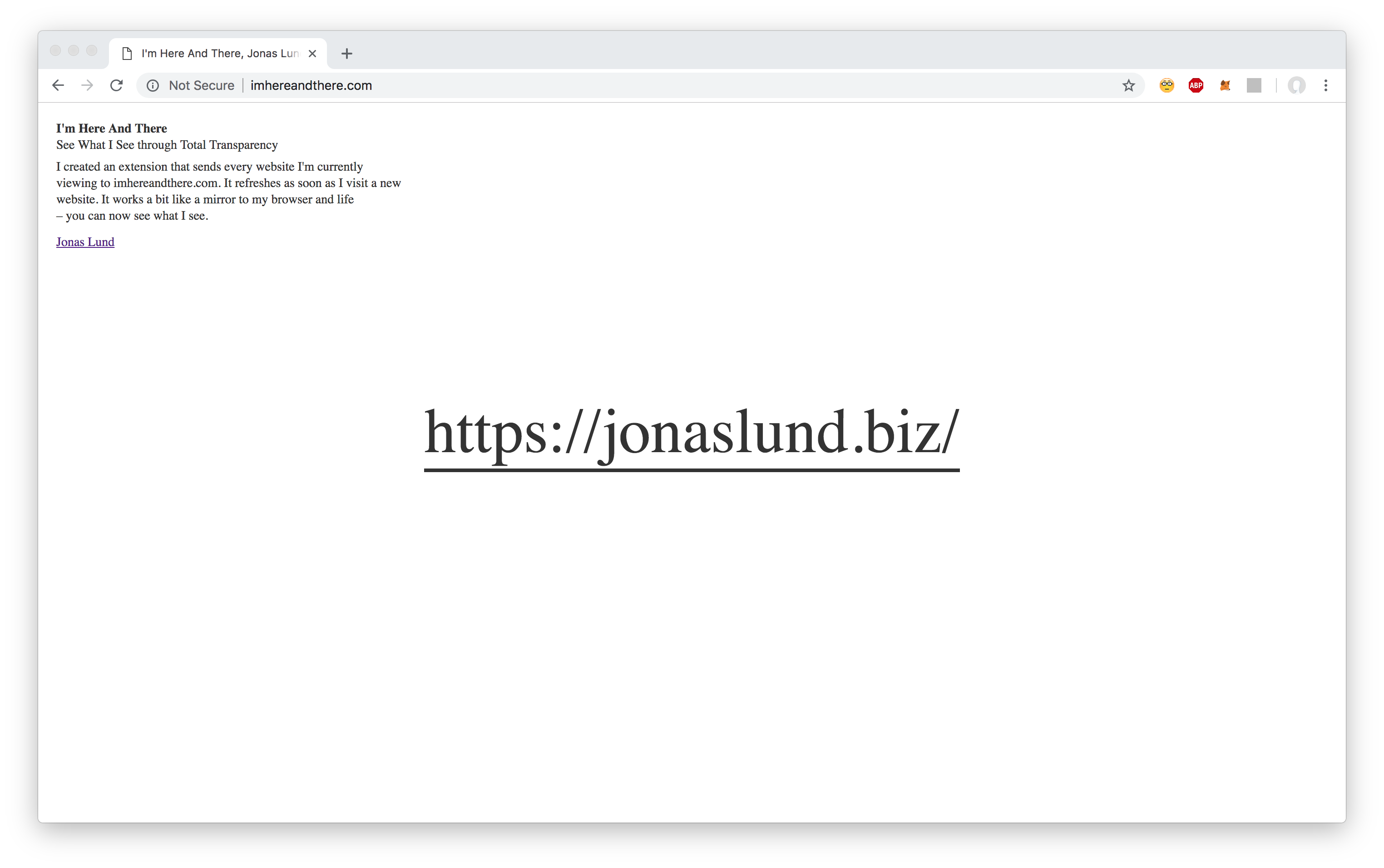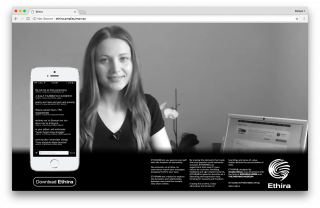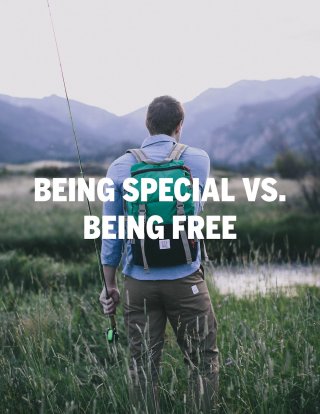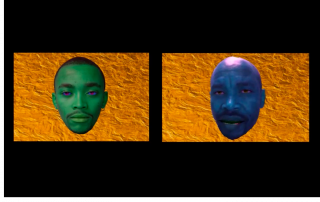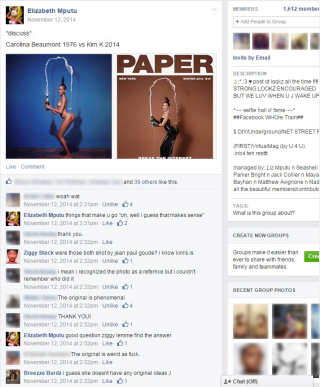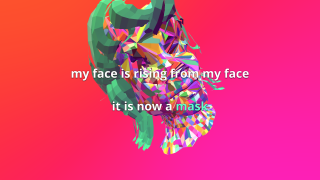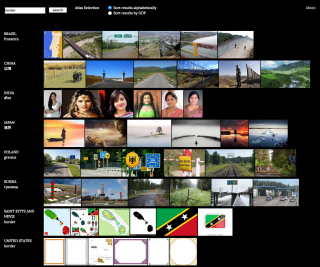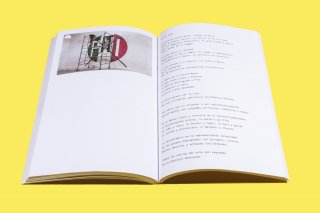I'm Here and There
Jonas Lund
2011
In a singular look at privacy and transparency in contemporary networked society, Jonas Lund’s web-based performance I’m Here and There offers entry into the artist’s browsing habits in real time.
Because the URLs that appear are responsive to Lund’s actual activity online, the revelation of his networks and behaviors unfold in a static, mundane manner. He deliberately engages in a heightened level of openness and vulnerability that is not native to the browsing experience. In essence, the work provokes our own online voyeurism—opening to vistas that anticipate Lund’s every move online. Long before the eruption of international media attention surrounding the NSA’s massive breach of user privacy and global surveillance of US citizens, Lund’s work marks a decisive moment in internet history—one that represents privacy and transparency as controversial and, increasingly, outmoded alternatives.
VISIT LIVE WORK
VISIT ARCHIVED VERSION
“It works a bit like a mirror to my browser and life—you can now see what I see.” — Jonas Lund
Upon visiting http://imhereandthere.com, viewers encounter a minimal page that displays a URL that corresponds with the precise location of Lund’s browser at any given moment.
Every time Lund visits a new website, or switches tabs to a site that was previously open, the site automatically refreshes to display the new URL.
His custom browser extension records each URL, with time of visit, in a simple browsing history archive.
Read an interview with Jonas Lund by Eileen Isagon Skyers
The work is one of several by Lund that seek to reframe web browsing as a performative act. These included Public Access Me, a performance which gave visitors access to a clone of Lund’s browser, not just the URLs he visited.
We See in Every Direction (2013) a browser that allowed users to surf collaboratively and publicly, put public browsing into the hands of users.
Jonas Lund, We See in Every Direction, 2013.
By making private behaviors public in a theatrical manner, these works question the trust that is demanded of users by software, infrastructure providers, and platforms. Ultimately, they suggest that although surfing the web may be intimate, it is never private.
“In a way, it’s somehow the most accurate sensation that you should have while browsing... Our bodily response to the erosion of privacy should be as if someone is sitting on your shoulder or looking over your shoulder all the time. But you don’t feel it, so you don’t actually recognize that it’s horrendous.”
— Jonas Lund
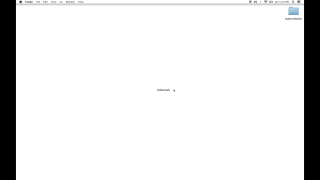 Contra-Internet Inversion Practice #1: Constituting an Outside (Utopian Plagiarism)
Zach Blas
2015
Contra-Internet Inversion Practice #1: Constituting an Outside (Utopian Plagiarism)
Zach Blas
2015
 DIS Images
DIS (LAUREN BOYLE, SOLOMON CHASE, MARCO ROSO, DAVID TORO, AND COLLABORATORS)
2013
DIS Images
DIS (LAUREN BOYLE, SOLOMON CHASE, MARCO ROSO, DAVID TORO, AND COLLABORATORS)
2013
